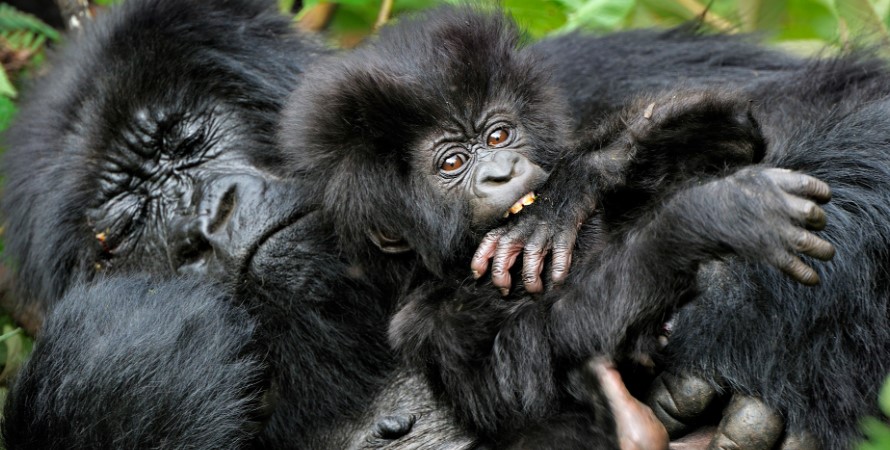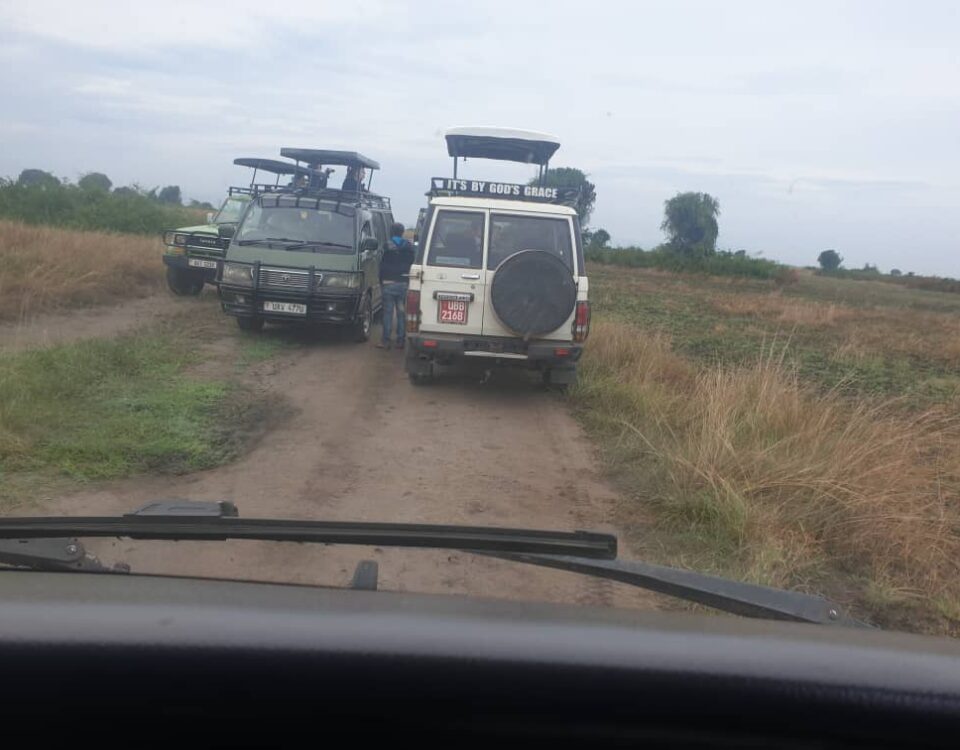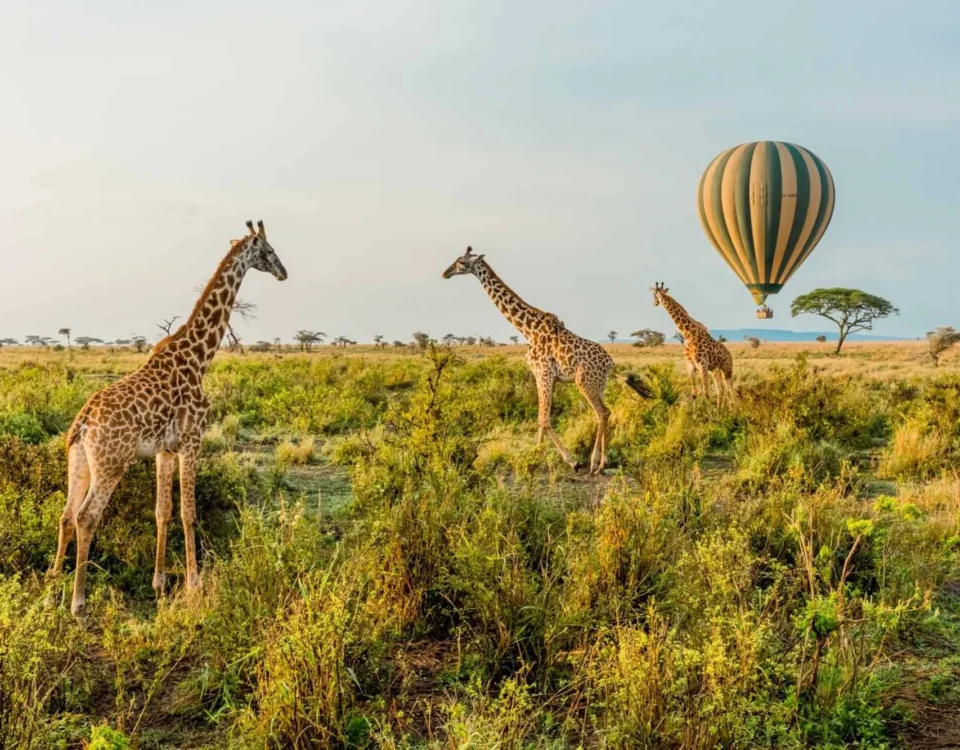
What to Wear for a Safari in East Africa
May 25, 2025
The Big Five in Uganda: Where to Find Them
May 29, 2025How Do Mountain Gorillas Sleep?
Introduction: Understanding the Nocturnal Habits of Mountain Gorillas
How Do Mountain Gorillas Sleep? Mountain gorillas, one of the most fascinating primates on Earth, exhibit unique sleeping behaviors that are crucial for their survival. These behaviors not only reflect their adaptation to the environment but also offer insights into their social structures and daily routines. For travelers embarking on a Uganda safari or Rwanda tour with Samz Tours Uganda, understanding these nocturnal habits enriches the gorilla trekking experience in Bwindi & Mgahinga.
Nesting Rituals: Crafting a New Bed Each Night
Every evening, as dusk approaches around 6:00 PM, mountain gorillas begin the meticulous process of building nests for the night. Utilizing branches, leaves, and vines, each gorilla constructs a unique nest, ensuring comfort and safety. This practice is not just about rest; it’s a vital behavior that aids in hygiene and predator avoidance. Infants, however, share nests with their mothers until they are capable of building their own, typically around the age of three .
These nesting habits are particularly observable during gorilla trekking adventures in Uganda’s Bwindi Impenetrable National Park and Mgahinga Gorilla National Park. Samz Tours Uganda offers guided treks that provide visitors with the opportunity to witness these behaviors firsthand, enhancing the overall wildlife safari experience.
Sleep Patterns: Duration and Positions
Mountain gorillas are known to sleep for approximately 12 hours each night, from dusk until dawn. They typically sleep on their sides or backs, with limbs curled close to their bodies, a posture that conserves warmth in the cool montane climates . This extended rest period is essential, allowing them to conserve energy for the following day’s activities, which include foraging and social interactions.
Understanding these sleep patterns is crucial for those interested in chimpanzee tracking and other primate behaviors during a Uganda safari. It provides a comprehensive view of primate lifestyles, enriching the educational aspect of wildlife safaris offered by Samz Tours Uganda.
Nesting Locations: Ground vs. Arboreal Choices
While mountain gorillas predominantly build their nests on the ground, the choice between ground and tree nests depends on various factors, including safety, weather conditions, and individual preferences. Females and younger gorillas may opt for arboreal nests, while dominant silverbacks usually prefer ground nests to monitor group safety .
These nesting choices are influenced by the dense vegetation and terrain of Bwindi & Mgahinga, making these locations ideal for observing such behaviors during a Rwanda safari or Uganda gorilla trekking expedition. Samz Tours Uganda ensures that visitors gain insights into these nesting preferences, adding depth to the gorilla trekking experience.
Social Dynamics: The Role of Nesting in Group Cohesion
Nesting is not merely a solitary activity; it plays a significant role in the social dynamics of mountain gorilla groups. The proximity of nests facilitates social bonding, communication, and protection. Silverbacks often position themselves strategically to guard the group, showcasing their leadership and protective instincts .
These social aspects are integral to understanding gorilla behavior during wildlife safaris. Samz Tours Uganda‘s expert guides provide detailed explanations of these dynamics during treks, enhancing the educational value of the Rwanda tour or Uganda safari experience.
Conservation Implications: Nests as Research Tools
Gorilla nests serve as valuable tools for conservationists and researchers. By studying nest locations, structures, and usage patterns, scientists can gather data on gorilla populations, health, and movements without intrusive methods . This non-invasive research is crucial for the ongoing efforts to protect these endangered primates.
Visitors participating in gorilla trekking Rwanda or Uganda gorilla trekking with Samz Tours Uganda contribute to conservation efforts. A portion of the trekking fees supports research and habitat preservation, making each safari not only an adventure but also a step towards safeguarding mountain gorillas.
Integrating Cultural Experiences: Beyond Gorilla Trekking
A comprehensive Uganda safari or Rwanda tour with Samz Tours Uganda offers more than wildlife observation. Visitors have the opportunity to engage with local communities, experiencing traditional dances, crafts, and cuisines. These cultural interactions provide context to the gorilla habitats, highlighting the coexistence of humans and wildlife in these regions.
Combining Uganda gorilla trekking with cultural experiences enriches the journey, offering a holistic view of the region’s biodiversity and heritage. Samz Tours Uganda curates itineraries that balance wildlife exploration with cultural immersion, ensuring a memorable and educational safari experience.
Conclusion: Embracing the Nightly Rituals of Mountain Gorillas
Understanding how mountain gorillas sleep offers profound insights into their lives, behaviors, and the ecosystems they inhabit. These nightly rituals, from nest building to group dynamics, are integral to their survival and social structures. For travelers seeking an in-depth wildlife safari, incorporating gorilla trekking in Bwindi & Mgahinga with cultural experiences in Uganda and Rwanda provides a comprehensive and enriching adventure
Samz Tours Uganda invites you to explore these nocturnal habits and more, offering expertly guided tours that delve into the heart of gorilla territories. Join us for an unforgettable journey that combines adventure, education, and conservation in the lush landscapes of East Africa.




